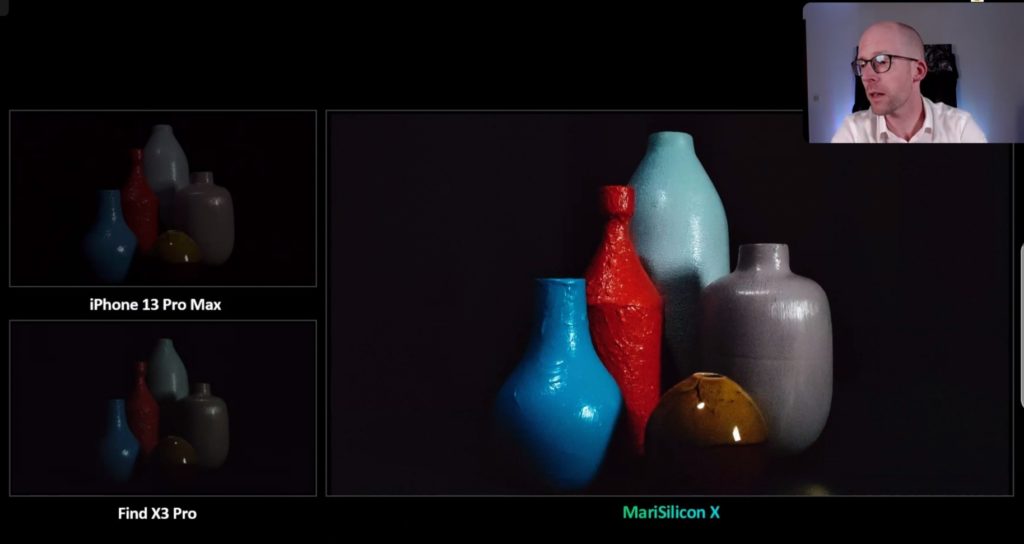OPPO today officially announced its first self-designed cutting-edge imaging NPU – MariSilicon X.
The following press release and screen shots are from a briefing we were given a week ago.
Obviously since it’s unreleased hardware the proof of whether MariSilicon X achieves what it promises will be known once it is used in production hardware.
MariSilicon X will make its debut in Q1 2022 on the Find X Series (Ausdroid assumes this will be the Find X4 Pro).
Built on 6nm process technology, MariSilicon X combines an advanced NPU, ISP, and multi-tier memory architecture to deliver high performance with power efficiency, which makes real-time RAW processing possible to capture 4K AI Night Video with live preview.
Jiang Bo, OPPO’s Senior Director said:
“With more than a decade of experience in pushing the boundaries of image technology, OPPO has been behind some of the biggest innovations in the industry when it comes to camera modules, lenses, and algorithms. Our new cutting-edge imaging NPU is the biggest leap we’ve taken so far, which brings more power to mobile imaging systems and will create extraordinary experience for our users.”
MariSilicon X’s NPU delivers 18 trillion operations per second (TOPS), which OPPO says is more than enough computing power to support their AI algorithms.
With a power efficiency of 11.6 TOPS per watt, the NPU delivers top-level performance without draining battery.
The NPU also features a groundbreaking dedicated tera-bps memory subsystem, which allows MariSilicon X to make full use of the NPU’s computing power without being restricted by memory throughout, significantly reducing the time needed to copy data back and forth between storage and processing units.
MariSilicon X has a dedicated DDR with extra bandwidth of up to 8.5 GB/s. Its multi-tier memory architecture greatly minimizes delays and reduces power consumption caused by unnecessary repeated read-write cycles.
When running OPPO’s AI Noise Reduction Algorithm, MariSilicon X can achieve up to 20x faster performance compared with OPPO Find X3 Pro. MariSilicon X can capture 4K AI Night Video by applying complex enhancements to each frame in real-time.

MariSilicon X has a powerful ISP that enables images to be captured with a 20bit 120db dynamic range – 4x greater than that of Find X3 Pro. It gives images a contrast ratio of 1,000,000:1 between the brightest and darkest areas of the image, better keeping images true to life.
Thanks to its large computing power and high data throughput, MariSilicon X revolutionizes the imaging pipeline to directly perform real-time 4K AI processing and 20bit HDR fusion in the RAW domain at the pixel level.
By processing original imaging data, MariSilicon X can achieve an 8dB signal-to-noise ratio for images, opening up a whole new world for computational photography.
Using Dual Image Pipeline design and double raw super sampling, MariSilicon X also unlocks the full potential of OPPO’s RGBW sensor, supporting the separation and fusion of RGB and White signals to deliver a 8.6dB improvement in signal-to-noise ratio and a 1.7x improvement in texture quality, making images more expressive in both photos and videos.
As a dedicated imaging NPU, MariSilicon X marks a new era in computational photography. With its huge leap in both performance and power efficiency, it unleashes the power of AI Noise Reduction algorithms to create clearer and sharper videos. It also features greater dynamic range and better color reproduction, allowing each individual frame looking just as rich and defined as a still photo. It is the first time that 4K AI HDR Night Video capturing is made possible on Android phones.




